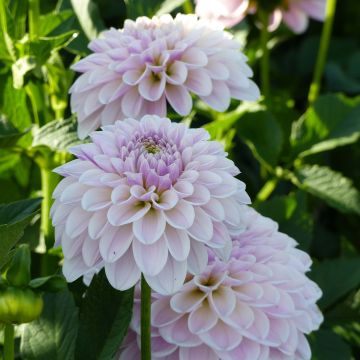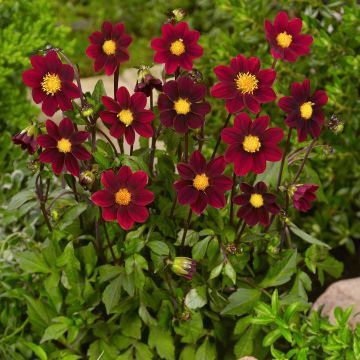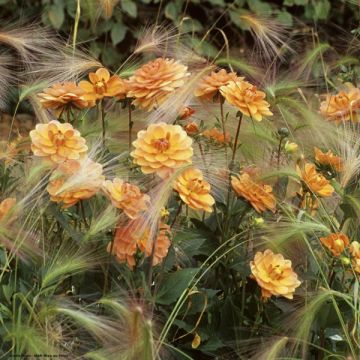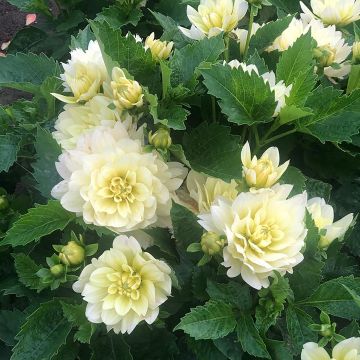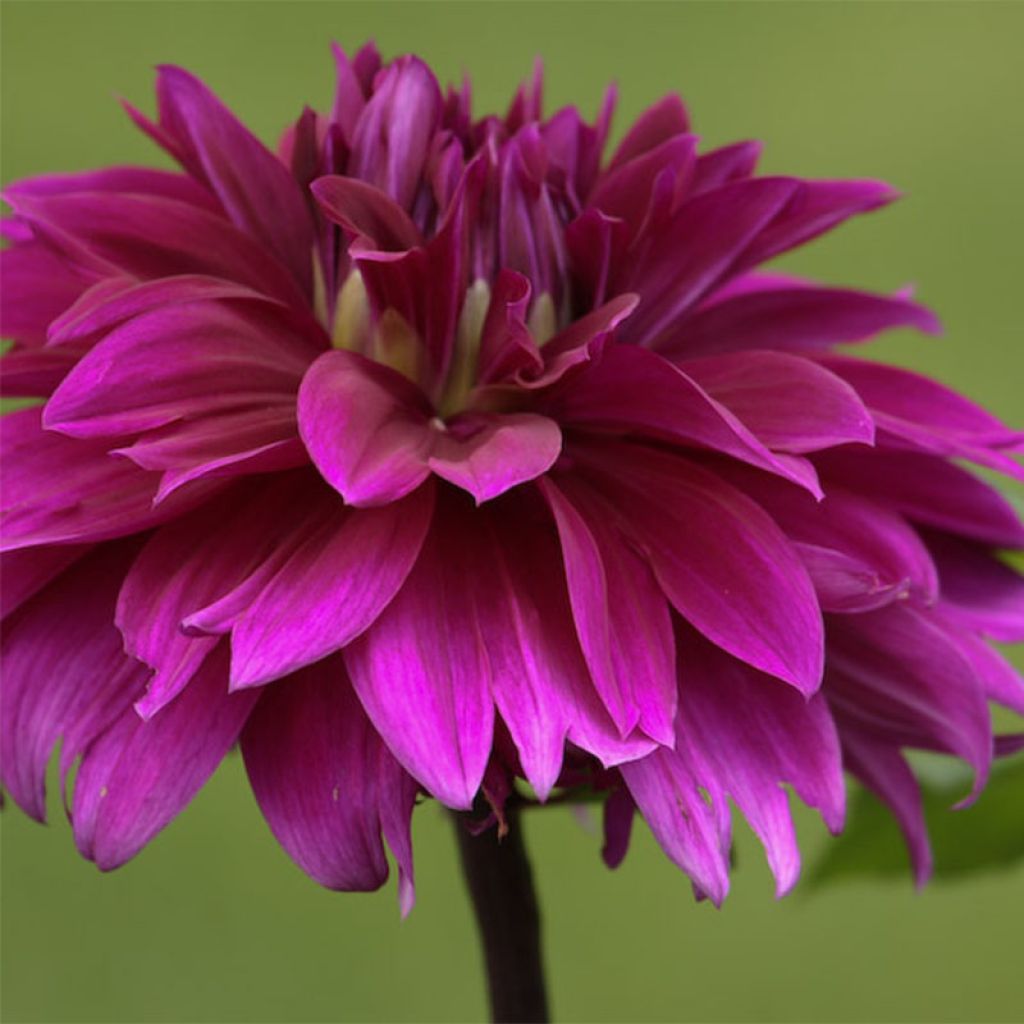

Dahlia Alva s Regalia
Dahlia Alvas Regalia
Dahlia Alva's Regalia
Dahlia
Beautiful colour identical to the photo, strong stems, lovely finish.
Béatrice en MOSELLE, 06/08/2023
Special offer!
Receive a €20 voucher for any order over €90 (excluding delivery costs, credit notes, and plastic-free options)!
1- Add your favorite plants to your cart.
2- Once you have reached €90, confirm your order (you can even choose the delivery date!).
3- As soon as your order is shipped, you will receive an email containing your voucher code, valid for 3 months (90 days).
Your voucher is unique and can only be used once, for any order with a minimum value of €20, excluding delivery costs.
Can be combined with other current offers, non-divisible and non-refundable.
Why not try an alternative variety in stock?
View all →This plant carries a 6 months recovery warranty
More information
We guarantee the quality of our plants for a full growing cycle, and will replace at our expense any plant that fails to recover under normal climatic and planting conditions.

Would this plant suit my garden?
Set up your Plantfit profile →
Description
Dahlia Alva's Regalia will seduce lovers of dark and distinguished flowers. Its flowers, more or less double, of medium size, have a round and fairly flat shape, gently languid. They are composed of petals with slightly laciniate edges, which sport a dark magenta pink colour almost purple, magnificent in the company of white, pink and mauve flowers. This medium-sized variety, quite old, will bloom from July to September in sunny flower beds or in a large pot on the patio.
Dahlias belong to the large family of Asteraceae, they are originally from the high plateaus of Mexico. At present, the approximately 25,000 horticultural varieties obtained by man have invaded gardens all over the world, to our great pleasure,. Dahlias varieties are classified according to the shape of their heads. 'Alva's Regalia', introduced in 1962, is a decorative Dahlia with medium-sized flowers. The inflorescences are composed of several rows of almost flat, rounded ligules with more or less fringed edges, slightly incurved. The heads measure up to 16 cm (6in) in diameter. Each ligule is very dark purple at the base, and extends into a brighter magenta red hue. The center of the flower is a more ash purple. The plant will reach about 1 m (3ft) in height and 70 cm (28in) in width and has a bushy habit. Its leaves, with a smooth texture, are divided into very denticulate lobes. The flowering of this variety begins in July and ends in September-October, if care is taken to remove faded flowers or to frequently use them to make bouquets.
Today, essential in gardens, Dahlias were initially cultivated in Mexico as a root vegetable. Their poor taste qualities quickly assigned them the rank of ornamental plant, but they are still welcome in the vegetable garden to bring a little colour in the midst of vegetables and supply a stock of cut flowers. Use in combination with a whole range of pink to plum and violet colours, but will be magnified by a setting of grasses (Stipa, Pennisetum, Crested Wheatgrass, Carex...), paniculate phlox, and white or red cosmos.
Dahlia Alvas Regalia in pictures


Plant habit
Flowering
Foliage
Botanical data
Dahlia
Alva's Regalia
Asteraceae
Dahlia
Cultivar or hybrid
Other Ornamental Dahlias
View all →Planting and care
Dahlia 'Alva's Regalia' is easy to grow in all regions. For abundant flowering, it is good to follow a few simple rules: plant the tubers in full sun, from the last frost, in rich, damp, and well-drained soils. However, waterlogging would promote tuber rot. Improve soil with compost and sand if necessary. Work the soil deeply and enrich it, for example, with bonemeal. Place your tuber and crumble the soil well to fill without air pockets. Your dahlia should be covered with about 6 cm (2in) of soil. At the end of planting, water abundantly once and then regularly repeat this watering during the first 6 weeks to help with rooting. Stake the tall varieties that may lean under rain and wind.
Dahlias are sensitive to cold, so they need to be overwintered. In November, when first frosts blacken the foliage, it's time to dig them up. Carefully unearth the tubers. Remove as much soil as possible. Let the foliage dry so that the tubers can replenish their reserves. Then cut the stems to 10 cm (4in). Spread your bulbs in a crate on newspaper. Store them in a frost-free, dry, cool, and dark place, such as a garage or attic. In warmer regions, close to the coast, where there are only a few days of frost per year, it is possible to leave them in place. In this case, simply cover the ground with a layer of leaves or straw for protection.
Planting period
Intended location
Care
Planting & care advice
-
, onOrder confirmed
Reply from on Promesse de fleurs
Similar products
Haven't found what you were looking for?
Hardiness is the lowest winter temperature a plant can endure without suffering serious damage or even dying. However, hardiness is affected by location (a sheltered area, such as a patio), protection (winter cover) and soil type (hardiness is improved by well-drained soil).

Photo Sharing Terms & Conditions
In order to encourage gardeners to interact and share their experiences, Promesse de fleurs offers various media enabling content to be uploaded onto its Site - in particular via the ‘Photo sharing’ module.
The User agrees to refrain from:
- Posting any content that is illegal, prejudicial, insulting, racist, inciteful to hatred, revisionist, contrary to public decency, that infringes on privacy or on the privacy rights of third parties, in particular the publicity rights of persons and goods, intellectual property rights, or the right to privacy.
- Submitting content on behalf of a third party;
- Impersonate the identity of a third party and/or publish any personal information about a third party;
In general, the User undertakes to refrain from any unethical behaviour.
All Content (in particular text, comments, files, images, photos, videos, creative works, etc.), which may be subject to property or intellectual property rights, image or other private rights, shall remain the property of the User, subject to the limited rights granted by the terms of the licence granted by Promesse de fleurs as stated below. Users are at liberty to publish or not to publish such Content on the Site, notably via the ‘Photo Sharing’ facility, and accept that this Content shall be made public and freely accessible, notably on the Internet.
Users further acknowledge, undertake to have ,and guarantee that they hold all necessary rights and permissions to publish such material on the Site, in particular with regard to the legislation in force pertaining to any privacy, property, intellectual property, image, or contractual rights, or rights of any other nature. By publishing such Content on the Site, Users acknowledge accepting full liability as publishers of the Content within the meaning of the law, and grant Promesse de fleurs, free of charge, an inclusive, worldwide licence for the said Content for the entire duration of its publication, including all reproduction, representation, up/downloading, displaying, performing, transmission, and storage rights.
Users also grant permission for their name to be linked to the Content and accept that this link may not always be made available.
By engaging in posting material, Users consent to their Content becoming automatically accessible on the Internet, in particular on other sites and/or blogs and/or web pages of the Promesse de fleurs site, including in particular social pages and the Promesse de fleurs catalogue.
Users may secure the removal of entrusted content free of charge by issuing a simple request via our contact form.
The flowering period indicated on our website applies to countries and regions located in USDA zone 8 (France, the United Kingdom, Ireland, the Netherlands, etc.)
It will vary according to where you live:
- In zones 9 to 10 (Italy, Spain, Greece, etc.), flowering will occur about 2 to 4 weeks earlier.
- In zones 6 to 7 (Germany, Poland, Slovenia, and lower mountainous regions), flowering will be delayed by 2 to 3 weeks.
- In zone 5 (Central Europe, Scandinavia), blooming will be delayed by 3 to 5 weeks.
In temperate climates, pruning of spring-flowering shrubs (forsythia, spireas, etc.) should be done just after flowering.
Pruning of summer-flowering shrubs (Indian Lilac, Perovskia, etc.) can be done in winter or spring.
In cold regions as well as with frost-sensitive plants, avoid pruning too early when severe frosts may still occur.
The planting period indicated on our website applies to countries and regions located in USDA zone 8 (France, United Kingdom, Ireland, Netherlands).
It will vary according to where you live:
- In Mediterranean zones (Marseille, Madrid, Milan, etc.), autumn and winter are the best planting periods.
- In continental zones (Strasbourg, Munich, Vienna, etc.), delay planting by 2 to 3 weeks in spring and bring it forward by 2 to 4 weeks in autumn.
- In mountainous regions (the Alps, Pyrenees, Carpathians, etc.), it is best to plant in late spring (May-June) or late summer (August-September).
The harvesting period indicated on our website applies to countries and regions in USDA zone 8 (France, England, Ireland, the Netherlands).
In colder areas (Scandinavia, Poland, Austria...) fruit and vegetable harvests are likely to be delayed by 3-4 weeks.
In warmer areas (Italy, Spain, Greece, etc.), harvesting will probably take place earlier, depending on weather conditions.
The sowing periods indicated on our website apply to countries and regions within USDA Zone 8 (France, UK, Ireland, Netherlands).
In colder areas (Scandinavia, Poland, Austria...), delay any outdoor sowing by 3-4 weeks, or sow under glass.
In warmer climes (Italy, Spain, Greece, etc.), bring outdoor sowing forward by a few weeks.
































